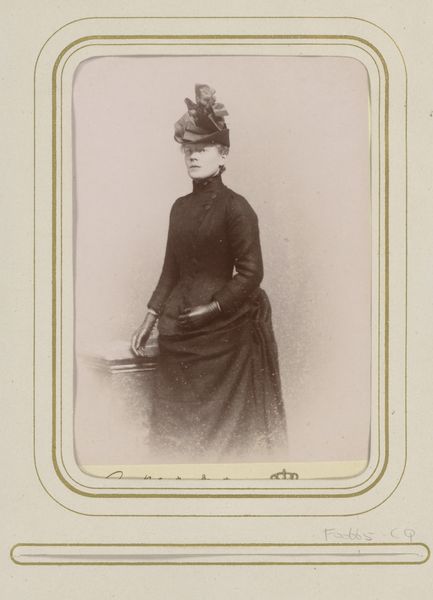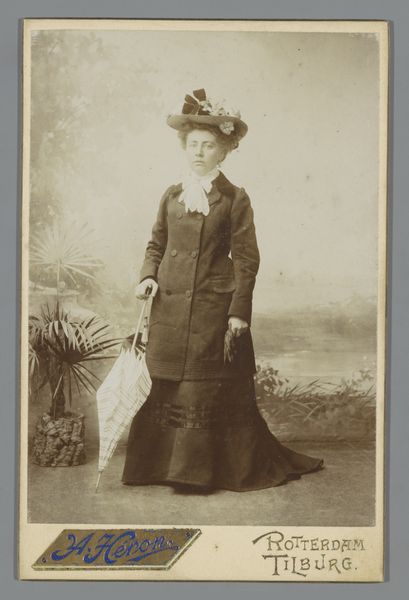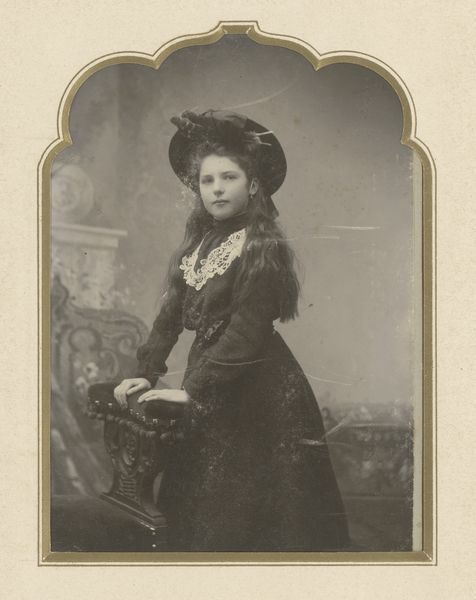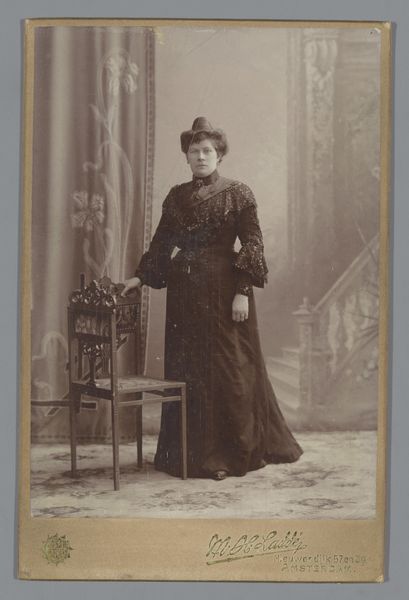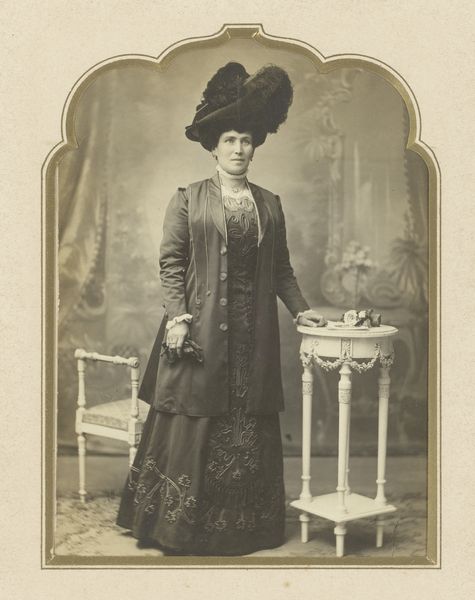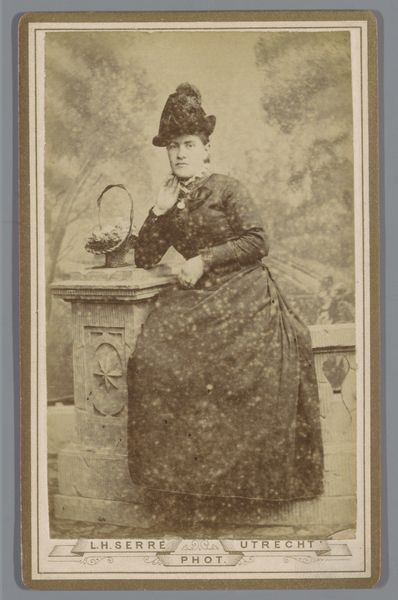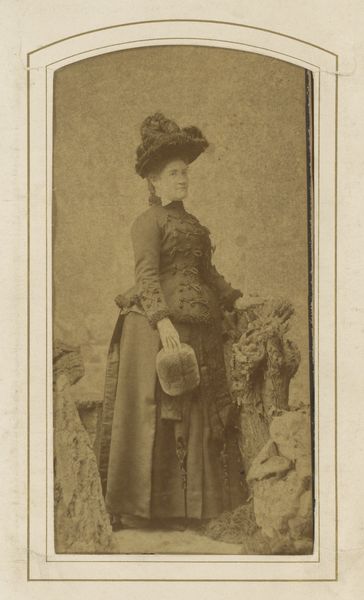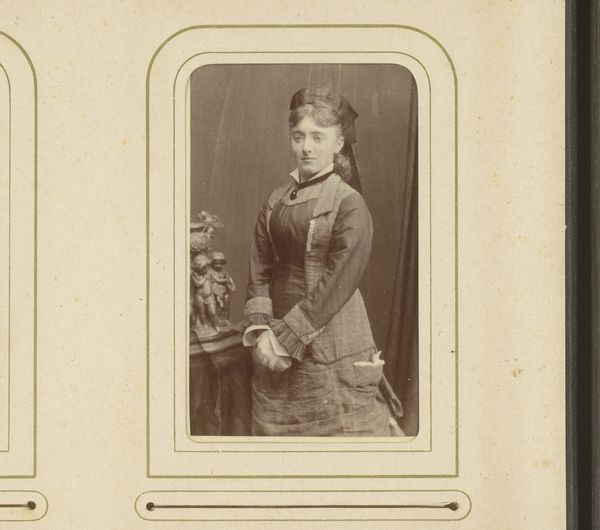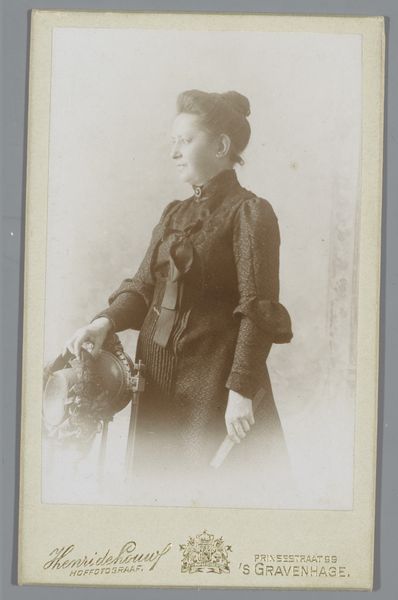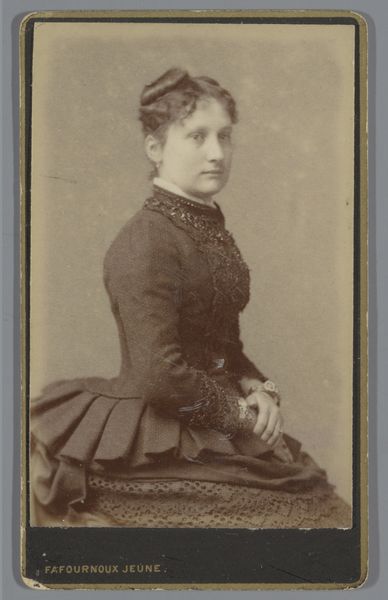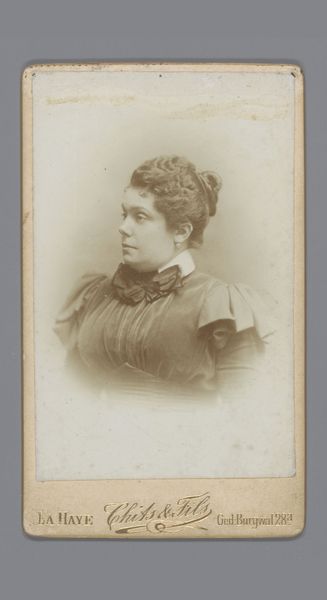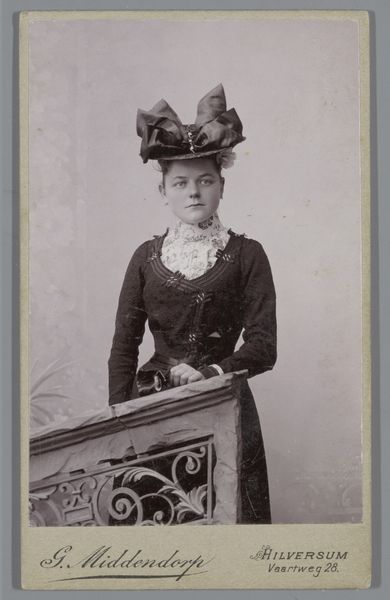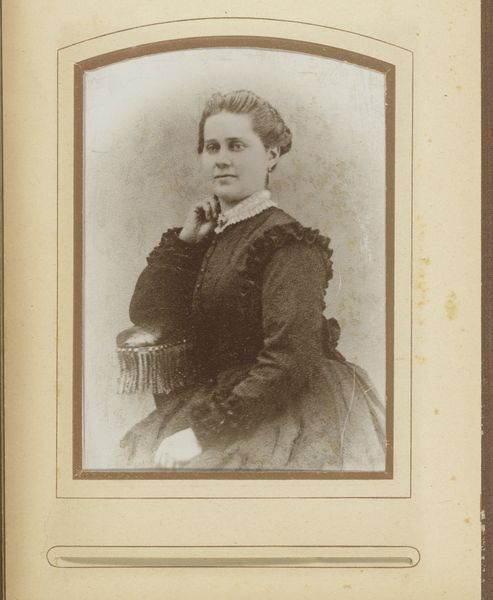
daguerreotype, photography, gelatin-silver-print, albumen-print
#
portrait
#
daguerreotype
#
photography
#
historical fashion
#
gelatin-silver-print
#
albumen-print
#
realism
Dimensions: height 137 mm, width 96 mm
Copyright: Rijks Museum: Open Domain
Curator: Here we have an albumen print, "Portret van een onbekende vrouw," dating from around 1880 to 1900, made by Herman van der Worp. What strikes you about it? Editor: It's compellingly stoic. Her stance and the formality of her dress speak to a certain reserved composure. You can see that, despite the limited palette. Curator: Indeed. Albumen prints such as this involve coating paper with egg white and then using it as a base for photographic chemicals. The process was relatively common then, a bridge between earlier photographic techniques like the daguerreotype and modern printing methods. The economics of studio portraiture during this period also comes to mind. Editor: Absolutely. The clothing indicates a certain level of affluence; that fur muff especially looks expensive. It prompts considerations of the social and economic structures that dictated who could afford such a portrait and what kinds of visual messages this photograph was designed to transmit. How does it speak to conceptions of feminine identity at that time? Curator: Notice also the backdrop and the column next to her. It hints at classical themes but is really just painted canvas. The details reveal the staged reality of the production—a controlled environment to capture an ideal. The paper and the photographic chemistry work in unison. Editor: A controlled, carefully constructed self-image for public consumption, and in this case, the gaze is directed away, almost evasive. Considering historical context, you have to ask about agency and to what degree this sitter had control over how she was being presented. The artist is capturing an impression that may or may not be her truth. Curator: That is precisely why focusing on the tangible aspects such as photographic material allows us to glimpse at larger forces at play—the consumption of photographic material, production cycles, as well as what we can glean from the photographer, H. W. van der Worp. Editor: I appreciate that emphasis on materials too. Examining them in conjunction with considerations of gender, class and social constructs really enriches our understanding and gets us closer to imagining the individual that existed outside the bounds of this composition. Curator: A layered interpretation that intertwines history, society, and craftsmanship is essential. Editor: I couldn't agree more. Together they unveil so much about our past, materially and ideologically.
Comments
No comments
Be the first to comment and join the conversation on the ultimate creative platform.
